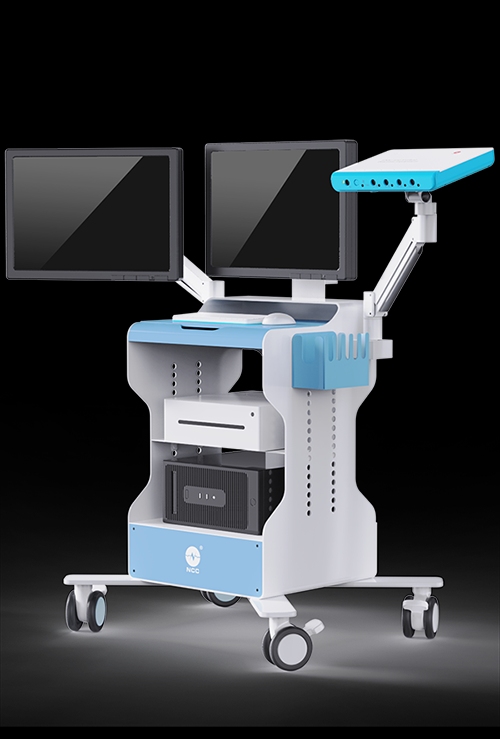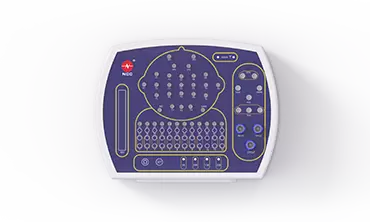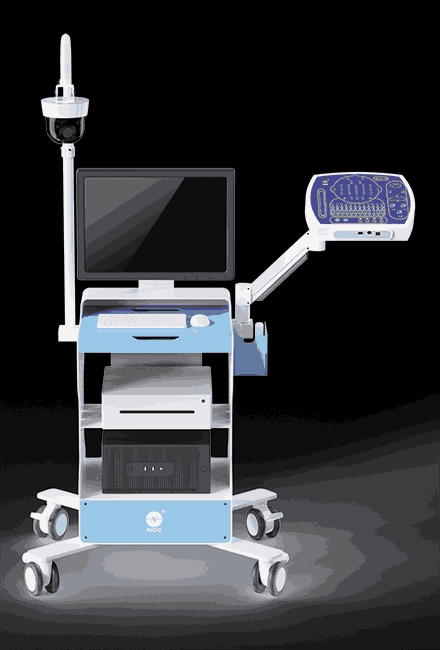Understanding EMG Machines: A Comprehensive Guide to Electromyography Technology
Electromyography (EMG) machines are essential diagnostic tools used to assess the health of muscles and the nerve cells that control them. By measuring the electrical activity produced by skeletal muscles, EMG machines provide valuable insights into neuromuscular function, helping clinicians diagnose a variety of conditions. This article explores the technology behind NCC’s EMG machines, their components, applications, and advancements that enhance their effectiveness in clinical settings.

What is Electromyography?
Electromyography is a diagnostic procedure that evaluates the electrical activity of muscles. When a muscle contracts, it generates electrical signals that can be detected and recorded by an EMG machine. These signals are essential for understanding how well the nerves communicate with muscles and can reveal issues such as nerve damage, muscle dysfunction, or problems with signal transmission from nerves to muscles.
Components of an EMG Machine
An EMG machine consists of several key components that work together to capture and analyze electrical signals:
1. Electrodes: Electrodes are the primary sensors used in EMG machines. There are two main types:
- Needle Electrodes: Inserted directly into the muscle, these electrodes provide high-fidelity recordings of electrical activity and are typically used for more detailed assessments.
- Surface Electrodes: Placed on the skin overlying the muscle, these non-invasive electrodes are commonly used for routine assessments and allow for easier patient monitoring.
2. Amplifier: The electrical signals generated by muscles are often very weak. The amplifier boosts these signals to a level that can be accurately measured and analyzed.
3. Computer System: Modern EMG machines are equipped with advanced computer systems that process and analyze the data collected from the electrodes. This system converts raw electrical signals into visual representations, such as waveforms or graphs, making it easier for clinicians to interpret the results.
4. Software: Specialized software is used to analyze the EMG data, providing tools for signal processing, visualization, and statistical analysis. This software can help identify patterns in muscle activity and detect abnormalities.
How EMG Machines Work
The process of using an EMG machine typically involves several steps:
1. Preparation: The patient is positioned comfortably, and the skin is cleaned to ensure good contact with the electrodes. In the case of needle electrodes, local anesthesia may be applied to minimize discomfort.
2. Electrode Placement: Depending on the type of EMG being performed (needle or surface), the appropriate electrodes are placed on the skin or inserted into the muscle.
3. Recording: The patient is asked to perform specific movements or contractions while the EMG machine records the electrical activity of the muscles. This can include resting muscle activity, voluntary contractions, or responses to electrical stimulation.
4. Analysis: After the recording session, the data is analyzed using the EMG software. Clinicians review the waveforms and patterns to assess muscle function, identify abnormalities, and make diagnoses.
Applications of EMG Machines
EMG machines have a wide range of applications in both clinical and research settings:
1. Diagnosis of Neuromuscular Disorders: EMG is commonly used to diagnose conditions such as muscular dystrophy, amyotrophic lateral sclerosis (ALS), and peripheral neuropathies. By assessing muscle response and nerve function, clinicians can pinpoint the location and extent of nerve or muscle damage.
2. Evaluation of Muscle Function: EMG can help evaluate muscle performance in patients recovering from injuries or surgeries. It is often used in rehabilitation settings to monitor progress and guide treatment plans.
3. Sports Medicine: In sports medicine, EMG is used to analyze muscle activation patterns during various physical activities. This information can help optimize training programs, prevent injuries, and enhance athletic performance.
4. Research: EMG technology is widely used in research to study muscle physiology, biomechanics, and neuromuscular control. Researchers utilize EMG to explore muscle coordination, fatigue, and the effects of different interventions on muscle performance.
Advancements in EMG Technology
Recent advancements in EMG technology have significantly enhanced the capabilities and applications of EMG machines:
1. Wireless and Portable Systems: The development of wireless EMG systems allows for greater mobility and comfort for patients. These systems enable continuous monitoring during physical activities, making them ideal for rehabilitation and sports performance assessments.
2. High-Resolution Surface EMG: Advances in surface EMG technology have improved the accuracy and reliability of non-invasive measurements. High-resolution surface electrodes can capture detailed muscle activation patterns, providing valuable insights into muscle function during dynamic movements.
3. Real-Time Biofeedback: Modern EMG machines can provide real-time biofeedback to patients, allowing them to visualize their muscle activity during exercises. This immediate feedback can enhance motor learning and aid in rehabilitation efforts.
4. Machine Learning and Signal Processing: Integrating machine learning algorithms into EMG analysis has improved the ability to classify muscle activity patterns and detect abnormalities. These advancements facilitate more accurate diagnoses and personalized treatment plans.
5. Telemedicine Applications: With the rise of telemedicine, EMG data can now be analyzed remotely, allowing specialists to consult with patients without requiring in-person visits. This is particularly beneficial for patients in rural areas or those with mobility challenges.
Conclusion
EMG machines are vital tools in the assessment of neuromuscular function, providing critical information for diagnosing and treating various conditions. With advancements in technology, these machines have become more user-friendly, portable, and effective in capturing muscle activity. As the field of electromyography continues to evolve, the integration of innovative technologies will further enhance the capabilities of EMG machines, ultimately improving patient care and outcomes in neurology and rehabilitation. Understanding the fundamentals of EMG technology empowers healthcare professionals to leverage these tools effectively, ensuring accurate diagnoses and tailored treatment strategies for their patients.

 中文
中文 Arabic
Arabic Spanish
Spanish Hindi
Hindi French
French Indonesian
Indonesian Portuguese
Portuguese Persian
Persian Russian
Russian Korean
Korean German
German Vietnamese
Vietnamese Turkish
Turkish



